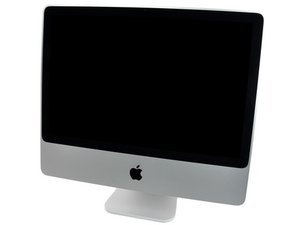To start with your system can support any SATA II (3.0 Gb/s) drive HD, SSHD or SSD. The issue is making sure the drive you do get is able to run at this exact SATA I/O speed. Many (HD, SSHD or SSD) are fixed speed and may not be able to run in your system. So its important to review the specs to find the Interface supported line and that it clearly states it works running at SATA II.
Before you get into upgrading your drive you should think though the amount of space the drive needs to be. SSD's need more free space than HD's to last longer. I recommend no less than 1/4 be left unused. If you run a lot of heavy memory apps you'll likely need more (1/3). Do make sure you've maxed out the system (8 GB) if you are using anything higher than Lion.
Then the next issue is the OS you are using. You have two things pulling at you here the age of the system and what OS is best suited for the SSD. Ideally, you should be running Mavericks to gain TRIM services for the SSD, but that might be to heavy for your system depending on what you're doing.
The last issue here is the cost for needed SSD. While you talked about getting a 500 GB drive will it be large enough now that we know we need more free space on it? Also remember this is an older system so does it make sense for the investment given its lifespan it has left. Sadly, Apple won't be supporting this system in the next version of OS-X (MacOS Sierra).
So thats a bit more to chew on here. While its nice to have the greatest drive in the system it may not be ideal given the systems age.
This is where maybe going half way would be a better direction. How about going with a SSHD drive? While you pointed out you have seen reports of problems with Seagate drives I can tell you most are related to older versions and all of the HD vendors have had their bumps (thats also true with the SSD makers as well). I should say I've not seen that many failures and we have quite a few Seagate SSHD's in service (both laptop & desktop systems).
- If you are still thinking on going with a SSD then I would go with the Samsung 750 EVO (500 GB)
The 750 EVO is the lowest priced SSD Samsung makes. You don't need anything fancier here. You'll need an adapter frame to support the smaller SSD (2.5" vs 3.5") if you are swapping out the current HD for the SSD. As for the thermal issues, none here! When you take the old HD out you'll take the stuck on sensor and transplant it to the new drive (either). Here's the IFIXIT guide you'll need to follow: iMac Intel 24" EMC 2267 Hard Drive Replacement
The other option here is to switch out the optical drive for a smaller SSD as your boot drive. Here's the IFIXIT guide to do this: Installing iMac Intel 24" EMC 2267 Dual Hard Drive and here is the special carrier you'll need: 12.7 mm SATA Optical Bay SATA Hard Drive Enclosure. In this config you could go with a smaller (cheaper) SSD option as you'll only have the OS and apps on it leaving the rest of the drive for the system to use. All of your deep content (docs, music vids etc...) stays on the HD. This would be my second option here.
So there you have it soup to nuts on your options!
Focus on how much space you'll need on the drive and what is the most economic solution for you balanced with the performance you are aiming for. As to durability look at the warranty the drives offer I doubt you'll still be using this system before the warranty expires ;-} Good Luck!
Cette réponse est-elle utile ?
A voté
Annuler
Indice
10
Annuler
Faites défiler ce fil pour trouver l'endroit approprié pour y placer ce commentaire. Cliquez ensuite sur « Ajouter commentaire à cette contribution » pour le déplacer.

 2
2 
 329
329  970
970 



1 commentaire
Here is the specs for your system iMac 24" 2.93 GHz Core 2 Duo (Early 2009)
par Dan